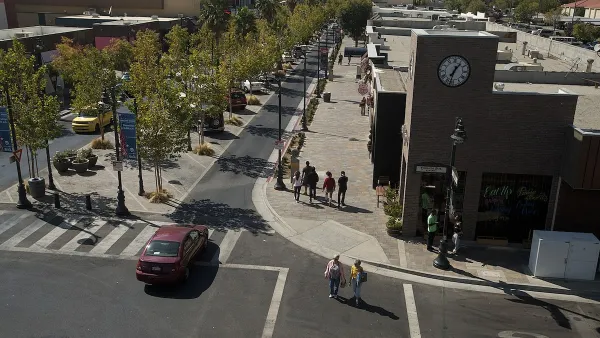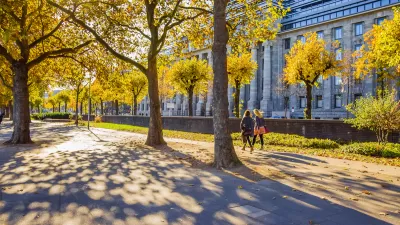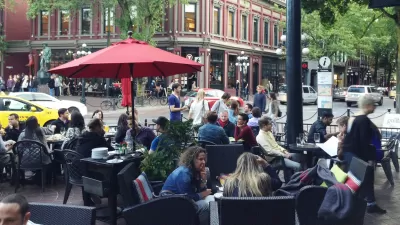New research sheds light on how the brain responds to urban environments and architecture.

The built environment, writes Jared Green for the American Society of Landscape Architects, "is directly linked with happiness and well-being, and too often urban environments fail to put people at ease." Justin Hollander, professor of urban and environmental planning and policy at Tufts University, says "we are deeply influenced by our surroundings" thanks to our "automatic (non-conscious) response to shapes, patterns, and colors."
"As we now understand, humans are drawn to landscapes that provide a refuge, a sense of safety, and prospect, a view of the entire scene, which supports that sense of safety. Storytelling is also important in landscapes, whether they are gardens, parks, or streetscapes. Humans are drawn to landscapes that provide clear sequences." In his experiments, Hollander uses eye-tracking technology to quantify the effects of various environments on the human brain. "Hollander said eye tracking software shows that New Urbanist-style communities, which have homes closer to the street; traditional architecture that mimic faces; and sidewalks all “encourage walking.” If a pedestrian can see a sequence — one, two, three, four homes in a row — they are more likely to want to walk down that row."
"According to Nikos Salingaros, professor of mathematics, architecture, urban, and complexity theory at the University of Texas at San Antonio, architects today are wed to a style rooted in 1920s Germany — the Bauhaus — that creates an unhealthy built environment" composed of "stylistically irrelevant glass boxes" that create cognitive stress in the human brain. Salingaros suggests that healthy environments are those that privilege human connectivity and the human scale–"intimate networks that are comfortable to humans." Architect and author Ann Sussman also suggests solutions for mitigating the effects of existing forms. In Somerville, Massachusetts, "the negative impact of the blank concrete wall of a parking garage was mitigated through public art and greenery."
Because "environments that are easier to fixate on cause less cognitive stress" and have a powerful impact on public health, argues Hollander, "planners, landscape architects, and architects have a responsibility to design a built environment that increases well-being."
FULL STORY: New Research: The Built Environment Impacts Our Health and Happiness More Than We Know

Maui's Vacation Rental Debate Turns Ugly
Verbal attacks, misinformation campaigns and fistfights plague a high-stakes debate to convert thousands of vacation rentals into long-term housing.

Planetizen Federal Action Tracker
A weekly monitor of how Trump’s orders and actions are impacting planners and planning in America.

Chicago’s Ghost Rails
Just beneath the surface of the modern city lie the remnants of its expansive early 20th-century streetcar system.

Bend, Oregon Zoning Reforms Prioritize Small-Scale Housing
The city altered its zoning code to allow multi-family housing and eliminated parking mandates citywide.

Amtrak Cutting Jobs, Funding to High-Speed Rail
The agency plans to cut 10 percent of its workforce and has confirmed it will not fund new high-speed rail projects.

LA Denies Basic Services to Unhoused Residents
The city has repeatedly failed to respond to requests for trash pickup at encampment sites, and eliminated a program that provided mobile showers and toilets.
Urban Design for Planners 1: Software Tools
This six-course series explores essential urban design concepts using open source software and equips planners with the tools they need to participate fully in the urban design process.
Planning for Universal Design
Learn the tools for implementing Universal Design in planning regulations.
planning NEXT
Appalachian Highlands Housing Partners
Mpact (founded as Rail~Volution)
City of Camden Redevelopment Agency
City of Astoria
City of Portland
City of Laramie





























